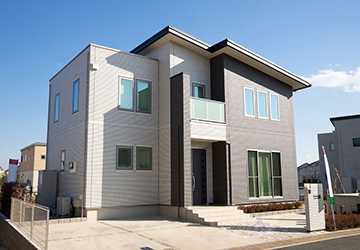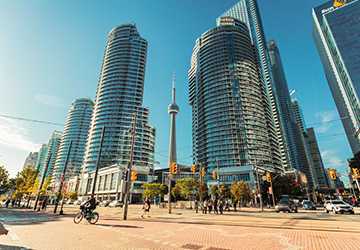
10 Trends Shaping the Future of Real Estate
sannan
Hello, our real estate enthusiasts! Today, we explore the wonderful world of real estate to identify the trends that will determine its future. The real estate industry is being fundamentally reshaped due to advances in technological development and growing concerns about ecological issues. It's no longer just about stone or wood; Real estate has transformed into a dynamic synergy of innovation, environmental awareness and fashion. Do you want to know more? Let's take a closer look.

Shaping the real estate trends of the future
Here are the top 10 recent trends impacting the real estate market:
Leading technology
When you say "smart home," you'll be surprised at what technology is capable of. Technology is making buying and selling homes more accessible and convenient, from VR tours to drone photography of real estate listings. Additionally, apps and websites that mine market data and predict home prices will become valuable tools for buyers and sellers to decide accordingly. So if you need to improve with technology, you should get into it.
Sustainable development is king.
Green is now more than a colour: it is a new attitude towards life, especially in real estate. People are aware of the impact of the environment on their lives, which affects their lifestyle, and this is reflected in their housing preferences. Energy-efficient appliances, green building materials, and LEED-certified structures are being used more than ever. Not only will you save the planet, but you'll also save money for the future.
Flexibility is key
The 9-to-5 job as we know it is slowly disappearing along with the traditional office space. Trends in remote work and the gig economy are causing people to rethink how and where they live. Co-working offices, shared apartments, and flexible leasing arrangements are rising. It is a fashion based on the principles of adjustability and flexibility. Therefore, flexibility is critical to business success, and you should be able to overcome the challenges of your idea.
The urbanization process continues to advance.
Cities are at the centre of what is happening and will remain so shortly. Urbanization is a global phenomenon, and it is no longer surprising that people continue to migrate to urban areas for better employment opportunities and quality of life. Global population growth will lead to a significant increase in urban housing demand. But urban renewal is no longer just about big cities; even some suburbs are undergoing urban rebirth.
The rise of co-living spaces
Millennials and Gen Z bring a new perspective to where they live. They value experiences over material possessions and community life. Improve your lifestyle with co-living spaces, shared accommodation and shared facilities at affordable prices. These spaces are designed to meet the needs of young professionals and students looking for a place to work flexibly, interact socially and enjoy convenience.
The rise of ESG investing
Developing ESG methodologies or strategies relevant to investment decisions has become a real trend in the real estate industry. In addition to institutional investors, private buyers increasingly focus on energy efficiency, environmentally friendly building practices and social impact when selecting properties. This trend will drive demand for ESG investing, leading to green building certifications, socially responsible developments, and more to meet the needs of affordable housing and community development.
Adaptive reuse and repurposing
The current urbanization process is accelerating, and sustainable development is given priority. Therefore, adaptive reuse and repurposing of structures are becoming increasingly popular. Unlike in the past, when developers demolished old buildings, today, they are finding creative ways to repurpose them for new uses. Converted historic warehouses are now rented out to trendy loft dwellers, old factories are converted into mixed-use developments, and former schools are transformed into community centres or hotels.

The ageing population drives demand.
The baby boom generation is retiring, and this demographic shift is causing major upheaval in the housing market. When they retire, most people want to downsize or move into a senior living community with a range of services tailored to their needs. This has led investors and developers to focus on building senior-friendly housing options, such as age-restricted communities and assisted living facilities.
Wellness facilities and biophilic design
As work stress and burnout increase, self-care becomes increasingly important as people focus on their health and well-being. This movement is reflected in real estate, with developers adding wellness amenities and biophilic design principles to their projects. These elements, including green roofs and outdoor yoga rooms, air purification systems and lighting optimization, help people feel physically, mentally and emotionally healthy.
The rise of secondary and tertiary markets
Lack of housing affordability has led to large cities attracting more and more people, causing attention to shift to secondary and tertiary markets for more affordable housing options. In addition to large cities, these markets include mid-sized towns, suburbs, and even rural communities, with lower housing costs, higher quality of life, and better investment opportunities. Developing better transportation and telecommuting infrastructure can increase the accessibility and attractiveness of these markets to buyers and investors.
Conclusion
These changes highlight the changing face of real estate and emphasize the importance of keeping up with changing markets and consumer tastes. Whether you're a developer, investor, or homeowner, you can find the right path based on your analysis of these trends while making your own decisions and maximizing your profits.




